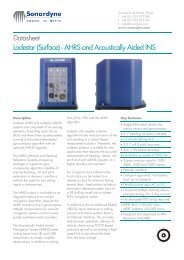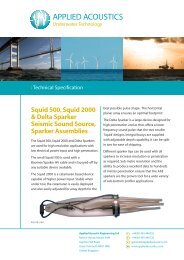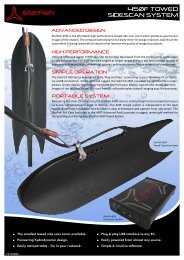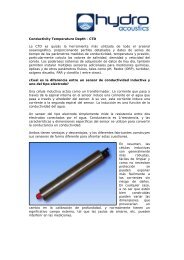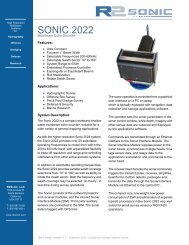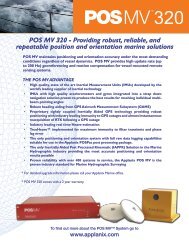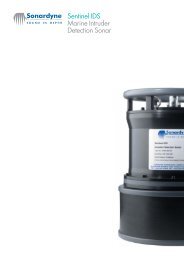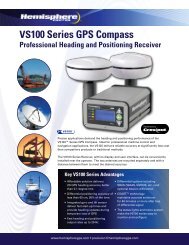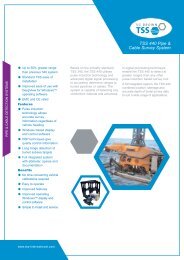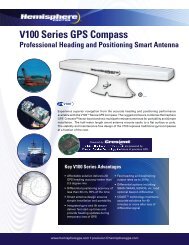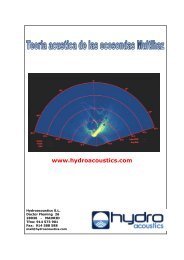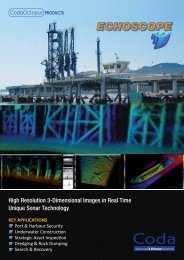POSPac 5.0 Marine - Applanix
POSPac 5.0 Marine - Applanix
POSPac 5.0 Marine - Applanix
You also want an ePaper? Increase the reach of your titles
YUMPU automatically turns print PDFs into web optimized ePapers that Google loves.
and inertial. The addition of PPVRS and tightly coupled IAPPK to <strong>POSPac</strong> makes it the<br />
most sophisticated package for position and orientation processing available in the<br />
marketplace today.<br />
Background<br />
PPVRS Workflow<br />
Although hydrographic surveying has traditionally been based on real time delivery of<br />
position and orientation data to the echo sounder via asynchronous serial communication,<br />
a recent trend is towards the post processing of such data.<br />
The PPVRS workflow starts on the vessel where all raw positioning sensor data is logged<br />
for post processing. GPS reference station data for the same time period is logged on<br />
shore and often archived in databases with online access.<br />
Post mission processing begins with an extraction of the vessel raw data files and a check<br />
for completeness and data integrity. The extracted data is formatted for use in<br />
downstream processing in a directory structure suitable for standard desktop computers<br />
with average speed and storage capacity.<br />
Reference Station Import<br />
Once the extraction of the vessel data is complete, the reference station data is either<br />
downloaded or imported locally. The reference station download tool automatically<br />
retrieves the data for the coinciding time interval of the survey. In the case of an internet<br />
download using an existing set of permanent GPS reference stations, the PPVRS software<br />
identifies those stations within a user defined radius from the middle of the survey<br />
trajectory. A database of stations is maintained within the <strong>POSPac</strong> software, along with<br />
an automated tool for FTP access to sites which make reference station data available for<br />
public use.<br />
A minimum of four reference stations are required for PPVRS, although typically 5 to 10<br />
are used. A search radius of up to 200 kilometers is recommended, less if there are<br />
stations near the survey area. In order to maintain centimetric accuracy at least one of the<br />
stations must be within 100 kilometers of the rover at all points of the survey. In the<br />
figure below all stations within 200 kilometers of the survey trajectory are displayed.<br />
There are 38 stations within the recommended 200 kilometer search radius. For the final<br />
processing of data on this particular survey, 7 stations were used.



